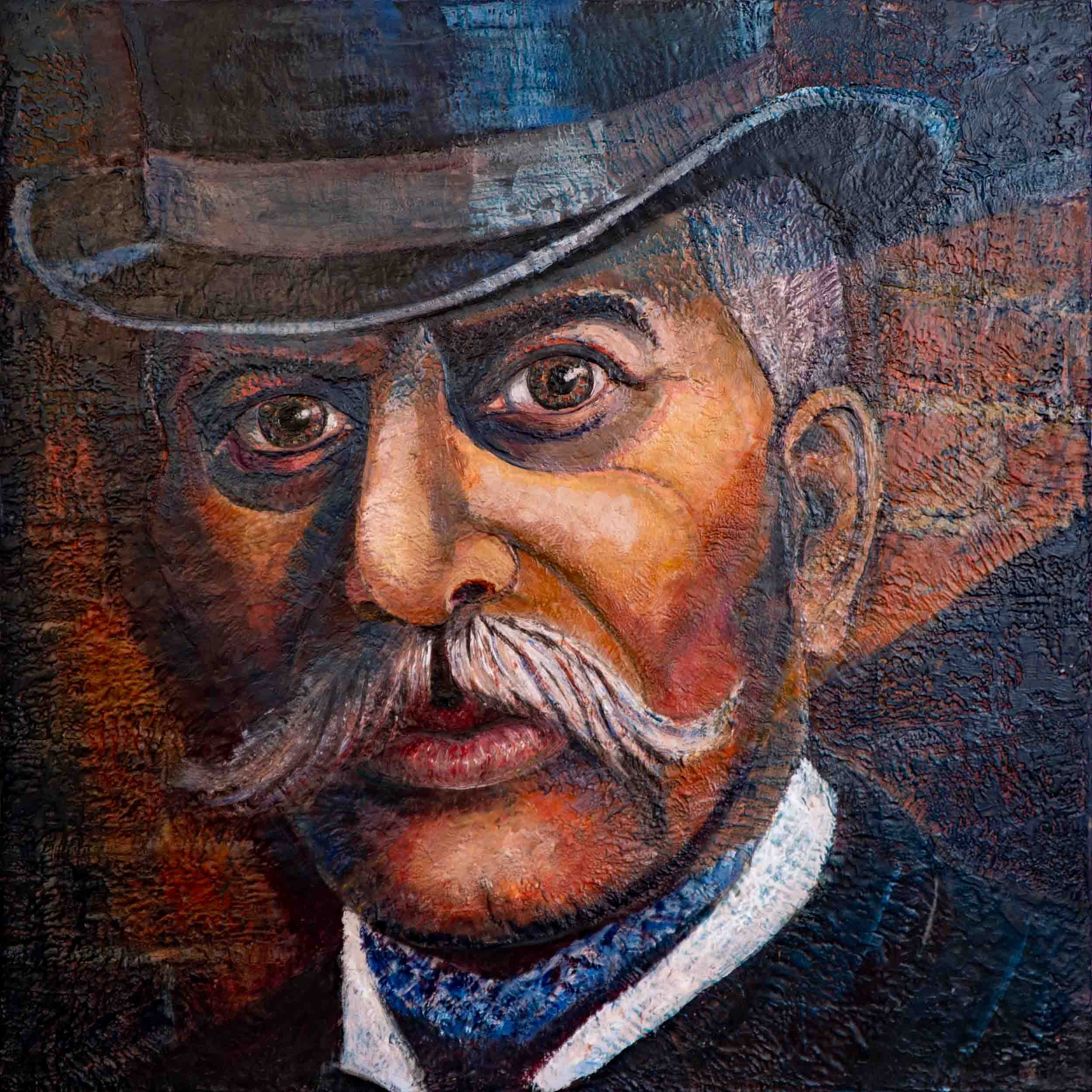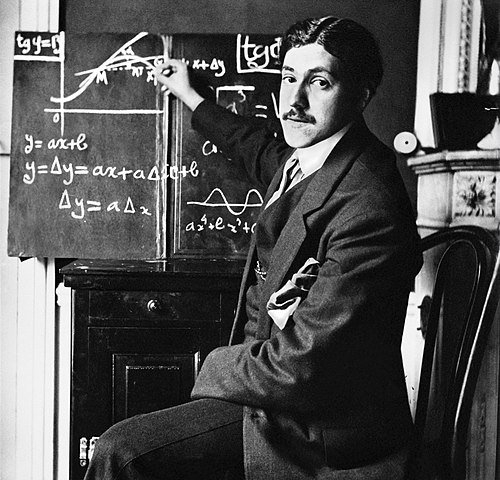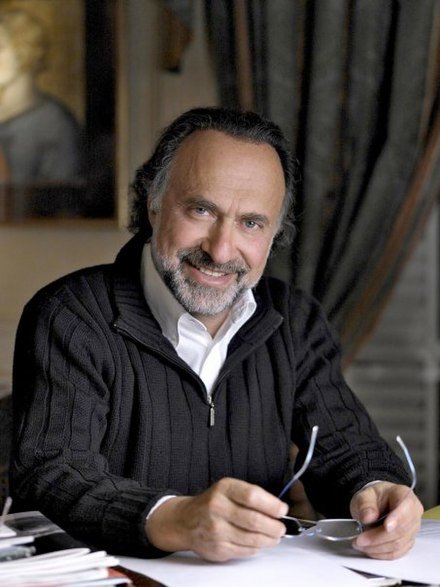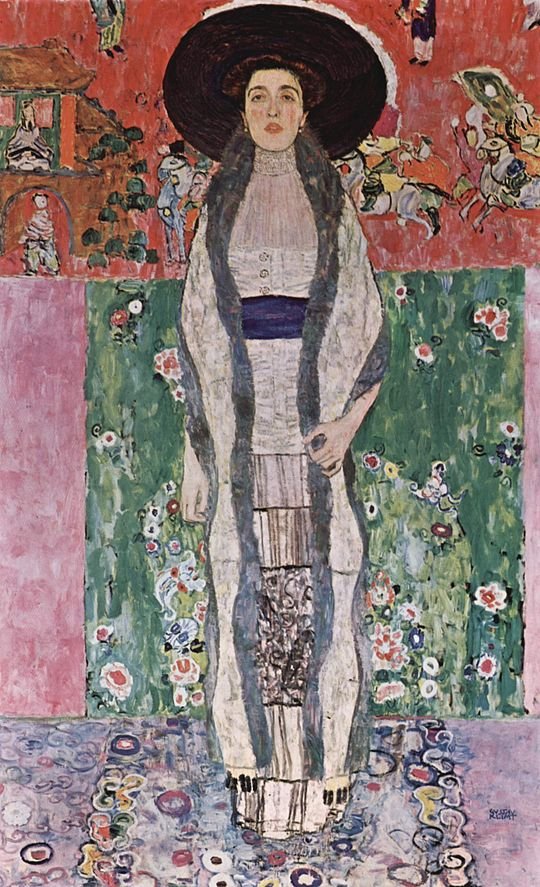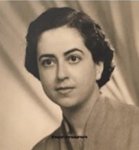Notable Ancestors
Rose Laure Allatini
Cyril Scott
composer — official Cyril Scott website
painting of Cyril Scott by George Hall Neale, photo credit: National Portrait Gallery, London
Thessalonki Prefecture building, Villa Allatini, former residence of Allatini family
Moïse Allatini 1809-1882
Moïse Allatini
Allatini orphanage, Salonika
Dr. Allatini was awarded an honorary medal by the government of Turkey (he received “Majidi'i” of the highest degree). The government of Greece gave him the honorary title of “Salvatori”, from the government of Austria he received the decoration of a Knight of the Order of Franz Josef (Ritter des Kaiserlichen Franz Joseph-Ordens) and from the government of Italy the decoration “Cavaliero” of the crown of Italy.
https://www.jewishgen.org/yizkor/thessalonika/thev1_014.html
Paul Bloch-Dassault
Darius Paul Dassault 1882-1969
Grand Chancelier de la Légion d'Honneur Darius Paul Bloch dit Dassault (Bloch)
Marcel Bloch, c. 1912
Marcel Dassault 1892-1986
French engineer, industrialist and aircraft manufacturer, .
book: The Talisman : The Autobiography of Marcel Dassault, Creator of the Mirage Jet
Olivier Dassault in 2013
Olivier Dassault
Gustav Klimt, Public domain, via Wikimedia Commons
Portrait of Adele Bloch-Bauer II
Eric Allatini
Eliane Nedjma Renée Juliette Veil - Amado (Levy-Valensi)
Éliane Amado Levy-Valensi - 1919-2006
French-Israeli psychologist, psychoanalyst and philosopher.
Max Friedmann
Darius Milhaud
Darius Milhaud is considered one of the most prolific composers in the history of music. Employing polyrhythm and syncopation, his music was dubbed “degenerate art” during the Second World War. His students include Dave Brubeck, Steve Reich and Phillip Glass.
Marie Luise Bechert - 1908-1953
Camondo family
Abraham Salomon Camondo
House of Camondo
Camondo Steps at Bankalar Caddesi (Banks Street) in Galata (modern Karaköy), Istanbul, constructed by Abraham Salomon Camondo c. 1870–1880.
Comte Moïse de Camondo
Comte Moïse de Camondo
Portrait of Mademoiselle Irène Cahen d'Anvers (Little Irene), Pierre-Auguste Renoir, 1880, Foundation E.G. Bührle Collection. At age 19, Iréne Cahen married Moise De Camondo.
Rappaport family (Rapoport)
Arnold de Porada Rappaport (-1907)
Arnold Rapoport Edler von Porada
Austrian politician, Knight of the Legion of Honor, and the Turkish order of Nishan-i-Medjidie and the Servian order of Sawa (1st class)
Rabbi Rapoport Machek, portrait by Antonin Machek
Aryeh Leib Heller
Aryeh Leib Heller 1745-1812
rabbi, Talmudist and Halachist in Galicia, whose daughter, Franziska Freide, married Solomon Juda Loeb Rapoport
KÄTHE ANNA RAPOPORT VON PORADA (Käthe Anna Magnus)
one of the most important female figures in the artist Max Beckman’s life
Max Beckmann: Käthe von Porada, 1924, pencil drawing
Museum der bildenden Künste Leipzig, on permanent loan from a private collection, Bayerische Staatsgemäldesammlungen, Fotoabteilung, © VG Bild-Kunst, Bonn 2015
Kathe Anna Rapoport Edle von Porada (Magnus), Max Beckmann, 1891-1985
Madeleine von Kuh, c. 1930
Madeleine Von Kuh 1900-1942
Austrian ladies golf champion
Grete Lebach
Albert Einstein’s girlfriend
Grete Lebach née Weilheimer (1910-) immigrated via Cuba to the United States in 1939, where she met her husband Erich Lebach (1905-1988), who had emigrated in 1936 and worked as the manager of a shirt retail business, Lebach-Hagen Shirt Co.
Albert Einstein sailing with Grete Lebach, photo by Lotte Jacobi, Lotte Jacobi (Archives at University of New Hampshire, Durham) Leo Baeck Institute
Albert Einstein and Margarete “Grete” Lebach. Huntington, New York, 1937
Lebach and Einstein were close acquaintances from his time in Berlin. She was a frequent visitor to his cabin in the countryside until Einstein emigrated from Germany in 1933. Lebach died in Vienna in August 1938. photo: Lotte Jacobi
Felicia von Kuh (née Rapoport von Porada)
portrait by Philip Alexius de László, 1904.
László was an Anglo-Hungarian painter known particularly for his portraits of royal and aristocratic personages.
The present portrait was probably begun at the beginning of 1904 and would have been on view during the Emperor’s visit to the Paris Salon. In a letter to de László from Berlin, dated 6 February 1904, Heinrich von Kuh asks if he too could be painted during a visit to Vienna in the second half of March. It is not known if this commission was carried out. In the same letter he inquires if the picture of his wife could be finished in time to exhibit it at the Paris Salon that year as “it is already today so splendid and promises so much that I am convinced it would be a huge success for you and you can imagine what a great joy that would be for me.”[1] The portrait was exhibited in Paris and while there the firm of Braun & Clement made a photographic reproduction of it which met with some criticism from the Kuhs.[2] Nevertheless some copies of the photogravure were given to friends and relations and in November 1905 this reproduction was used for an illustration in an article about de László in the Italian art magazine Emporium. A photograph shows de László standing proudly beside the finished portrait in the Theresianumgasse studio with his portrait of Angela von Miller-Aichholz and her daughter behind [13477].
‘Fela’ was born Felicia Rapoport in Krakow on 9 February 1873, the third daughter of Arnold Chaim Rapoport (1840-1907) and his wife Laura, née Eibenschitz (c.1850-1904). Arnold Rapoport, born in Tarnow in Galicia, had moved with his family to Krakow as a child. He studied law there and opened his own law-office in 1870. The year after Fela’s birth he was elected to the municipal council of Krakow. In 1877 he became a member of the Galician Diet and in 1879 representative for Galicia in the Reichsrat (Upper House). The family moved permanently to Vienna in 1881. In 1890, Arnold Rapoport was ennobled as Edler von Porada for his work on behalf of Jews in the eastern part of the Empire.
On 15 November 1899 Fela Rapoport von Porada married in Vienna Heinrich Ritter von Kuh (1869-1957), a senior engineer in the Ministry of Railways. They had two children: Madeleine[3] (b.1900) and Georg Alfred (b.1902).
Heinrich von Kuh’s business often took him abroad and in 1903 he was posted to Berlin. When the de Lászlós moved permanently from Budapest to Vienna in September 1903, it was the Kuhs who rented them their flat in the Theresianumgasse 6 in the fourth district, near the Belvedere Palace. The de László family remained in the Kuhs’ flat until September 1904 when they moved to the nearby Heugasse (now Prinz Eugen Strasse) 12.
De László also had his studio in the house and during that year firmly established his reputation as the foremost portrait painter in Vienna. The address regularly featured in the social columns of the Viennese newspapers owing to the steady stream of prominent visitors to the studio, including, on 5 March 1904, the Emperor Franz Joseph himself,[4] who came in order to see the progress on de László’s full length posthumous portrait of the Empress Elisabeth [110806].
Both Fela and Heinrich were themselves keen amateur artists, and Fela received some tuition from de László. While in Berlin Fela studied sculpture with Hugo Lederer,[5] who at the time was working on the massive 15m high statue of Bismarck later erected in Hamburg. After the Kuhs’ return to Vienna Fela became known for her clay portrait busts and delicate architectural drawings, many of which were illustrated in the Wiener Salonblatt, a popular society magazine of the time.
1904 Philip de László with the portrait of Frau Heinrich von Kuh, and that of Frau August von Miller-Aichholz, with her daughter DorotheaMiller Aichholz behind, Theresianumgasse studio, Vienna
De László with the portrait of Frau Heinrich von Kuh, née Felicia Rapoport von Porada and Frau August von Miller-Aichholz, née Angela von Mallmann, painted in 1902
de Laszlo Archive © de Laszlo Foundation
The Kuhs left Austria for England after the arrival of the Germans in Vienna in March 1938 and by 1940 had settled in Barbados where Fela (or Madame de Kuh, as she was best known) soon became established in the flourishing local art scene. Her atmospheric watercolours revealed her delight in the colours of the island and it has been noted that in her pencil drawings “by gradations of tone she almost suggests colour.”[6] Over the next two decades she became one of the most influential artists on the island. One of her pupils, Fielding Babb,[7] has described her as a “very small, bony woman, very open [who] would explain to anyone what she was doing – very free.”[8] Despite the solace she found in Barbados, nonetheless Fela’s heart remained in Vienna. In a review of her memorial exhibition held in 1960, Briggs Clarke wrote: “One heaves a sigh of deep regret at the absence of those marvellous interpretations in pencil of gorgeous baroque architecture, fascinating portrait heads in flowing lines; watercolour interiors which revealed the lush, leisured atmosphere of the rank and wealth of old world charm and dignity.”[9]
Fela died aged 86 in Christ Church, Barbados, on 11 June 1959, eighteen months after her husband.




